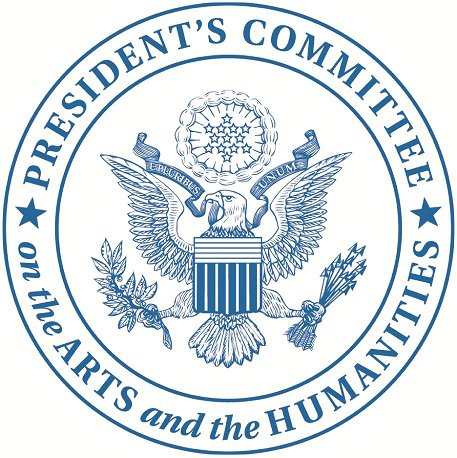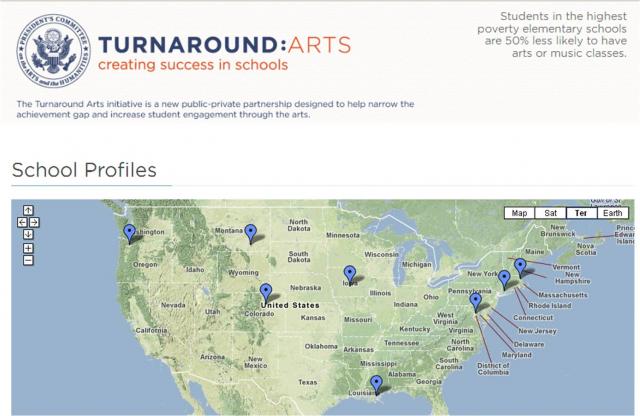Turning Around Education with the Turnaround Arts Initiative
By now, you have probably read about President Obama’s Turnaround Arts Initiative in the paper, seen a segment about it on the nightly news, or  heard about it on Entertainment Tonight between cosmetic secrets of the stars at the Metropolitan Gala and celeb sightings of Blake Lively with Ryan Reynolds (Wedding plans in the works? You didn't hear it from me...). If you are still curious about the Turnaround Arts Initiative, then this post will provide you with a tidy summary of the program from a policy and arts education perspective. Unfortunately though, this post does not include details on Eva Longoria’s summer workout plan and how-to advice on beating the heat in Mila Kunis-esque summer dresses. Sorry.
heard about it on Entertainment Tonight between cosmetic secrets of the stars at the Metropolitan Gala and celeb sightings of Blake Lively with Ryan Reynolds (Wedding plans in the works? You didn't hear it from me...). If you are still curious about the Turnaround Arts Initiative, then this post will provide you with a tidy summary of the program from a policy and arts education perspective. Unfortunately though, this post does not include details on Eva Longoria’s summer workout plan and how-to advice on beating the heat in Mila Kunis-esque summer dresses. Sorry.
“We are, as a country, engaged in a national conversation about how to fix our nation’s broken schools. We feel strongly that, while no one strategy alone is a silver bullet, art education should have a seat at the table. Turnaround Arts will test that theory, in addition to bringing effective arts education to thousands of our neediest young people and creating more access to the arts in our most underserved neighborhoods.”
The Turnaround Arts Initiative is:
• an arts education funding initiative in full swing as of April 23, 2012
• a public-private partnership designed to help narrow the achievement gap and increase student engagement through the arts (private partners include: the Ford Foundation, the Herb Alpert Foundation, Crayola, the NAMM Foundation, the Aspen Institute and Booz Allen Hamilton)
• a creation of the President’s Committee on the Arts and Humanities (PCAH), in coordination with the U.S. Department of Education and the White House Domestic Policy Council (other public partners include the National Endowment for the Arts, the Arts Education Partnership, the Council of Chief State School Officers, and the National Assembly of State Arts Agencies)
• testing the hypothesis put forward by the PCAH’s 2011 report Reinvesting in Arts Education: Winning America’s Future Through Creative Schools, that “high-quality and integrated arts education can be an effective tool to strengthen school reform efforts-boosting academic achievement and increasing student motivation in schools facing some of the toughest educational challenges in the country”
• directed at the nation’s lowest-performing elementary and middle schools across the country, known as “turnaround schools” (turnaround schools are in the lowest-performing 5 percent of their state and receive School Improvement Grants through the Department of Education)
• a pilot project at this point, schools have already been selected to participate
• a two-year project, results will be evaluated at that point, program expansion will be considered, and resources will be made available from which ALL schools can benefit
What will the Turnaround Arts Initiative do and how will it be evaluated?
• Provide the selected schools with arts education services, resources and materials to “increase the likelihood of successful school turnaround, engage their community, and raise the visibility of their achievements”
• The key to the program's success is fully integrating the resources into the curriculum, making effective, impactful and rigorous arts programming part of the school’s being
• The impact and effectiveness of arts education in advancing academic achievement, student and community engagement, and overall school performance will be evaluated and reported by Booz Allen Hamilton, a consulting firm, at the close of the two-year term
Why did Entertainment Tonight cover the Turnaround Arts Initiative? Eight under performing schools across the country were selected through an application process. These schools have each been “adopted” by celebrity artists who will remain involved in the school’s curriculum reform by participating in events, performances, and classes. Below is the breakdown of each parent artist and their adopted school(s):
• Chuck Close (award-winning visual artist), Roosevelt Elementary in Bridgeport, Connecticut
• Yo-Yo Ma (award-winning cellist), Orchard Gardens School in Boston, Massachusetts
• Sarah Jessica Parker (award-winning actress), Martin Luther King, Jr. School in Portland, Oregon
• Kerry Washington (award-winning actress), Savoy Elementary in Washington, DC
• Forest Whitaker (award-winning actor), Findley Elementary School in Des Moines, Iowa
• Damien Woetzel (arts leader, previous Principle Dancer with New York City Ballet), Lame Deer Jr. High School in Lame Deer, Montana and Orchard Gardens Schools in Boston, Massachusetts
• Alfre Woodard (award-winning actress), Batiste Cultural Arts Academy in New Orleans, Louisiana and Noel Community Arts School in Denver, Colorado
Is there opposition?
• Diane Ravitch, author and previous U.S. Assistant Secretary of Education under George H. W. Bush and Bill Clinton, says the Turnaround Arts Initiative is just a “teeny, tiny little band-aid on what is a giant, national, festering problem…And it doesn’t begin to address the needs of the schools.”
But we have to start somewhere, right? Many school systems and communities are eager to be included in the program as it offers promising opportunities and resources customized to fit the needs of each school. However, as a pilot project with strict parameters, the Turnaround Arts Initiative is currently focused on evaluating the impact and results of the program on the eight selected schools over the next two years. Meanwhile, schools and the general public can stay informed about the project, its progress, and resources made available by referring to the Turnaround Arts Initiative website, its Twitter feed, and the Arts Education Partnership’s webpage.
Stay informed about the Initiative, stay inspired by its intentions, and keep advocating for arts education funding on a local level.

